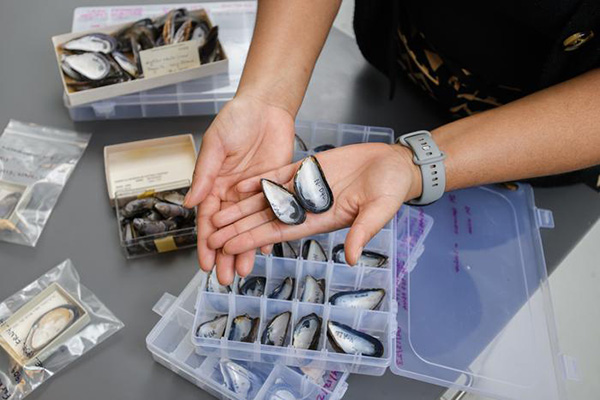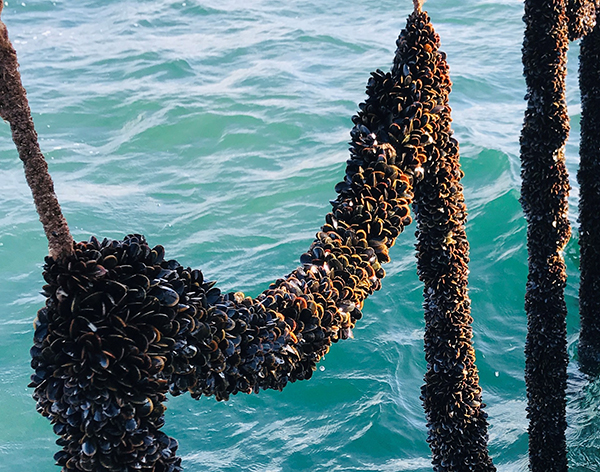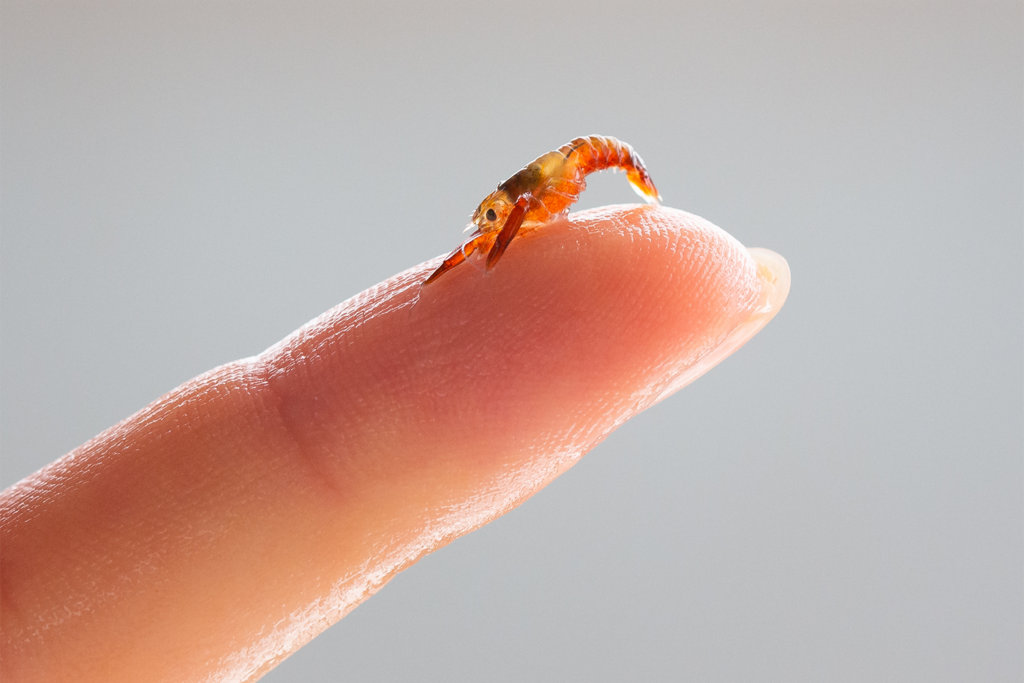East Coast mussel shells have become weaker and more susceptible to damage, likely due to climate change, study reveals

A new study has found that the porosity – or small-scale holes – in mussel shells along the U.S. East Coast has increased over the last 120 years, potentially due to ocean warming.
Researchers at the American Museum of Natural History analyzed modern mussel shells and compared them to specimens in the museum’s historic collection. The study found modern shells are much more porous than those from the 1960s or even early 1900s, likely due to rising ocean temperatures.
“Mussels are important on so many levels: they provide habitats on reefs, they filter water, they protect coasts during storms and they are important commercially as well,” said Leanne Melbourne, the study’s lead author and a postdoctoral fellow at the museum. “Human-caused environmental changes are threatening the ability of mussels and other mollusks to form their shells, and we need to better understand what risks will come from this in the future.”
Previous studies on the blue mussel (Mytilus edulis) have used lab experiments to investigate how ocean warming and acidification impact the form and function of these marine invertebrates. The scientists drew on a historical resource – the museum’s large bivalve collection, which dates to the late 1800s – to trace environmental changes in natural settings.
“Museum collections are ideal for showing change over long stretches of time. Organisms in natural environments have slow exposure to changing conditions, with more time to adapt and more than one stressor,” said Nathalie Goodkin, co-author and a curator in the museum’s Department of Earth and Planetary Sciences. “Laboratory experiments are great at teasing apart individual drivers, but that’s not how things work in the real world.”
Melbourne focused on shells collected in the early 1900s and the 1960s from five sites: Nahant Bay in Massachusetts, the southern end of Cape Cod, the tip of the Long Island Sound, western Long Island Sound and New York Harbor. She then paired these historic specimens with modern samples from the same sites and conducted a series of comparisons, including the thickness of the shells, their surface area and volume and density and porosity.
The great mussel debate: What’s wild, what’s farmed and what certification scheme fits the bill?
The study found that shells collected today are significantly more porous than shells collected in the 1960s and more porous than shells collected at some of the sites in the early 1900s, suggesting that increases in temperature led to increases in porosity.
The North Atlantic has experienced seasonal temperature increases of up to 3 degrees Celsius (5.4 degrees Fahrenheit) since 1902, but the warming has not been uniform, which may account for some of the variations in porosity in historical specimens. The influence of the North Atlantic Oscillation, a weather phenomenon that brought colder-than-expected water temperatures in the 1960s, is also a factor.
Porosity is known to affect the structural integrity of mollusk shells, making shells weaker and potentially more susceptible to damage. More work is needed to determine how temperature change, in particular, could be affecting these mussel populations.
“We know that mussel and mussel reef ecosystem services are dependent on robust shell formation,” said Melbourne. “If they are forming weaker shells, they will break more easily, and we might lose these important organisms. But we need more studies first to look at what’s happening here on a materials science level.”
Now that you've reached the end of the article ...
… please consider supporting GSA’s mission to advance responsible seafood practices through education, advocacy and third-party assurances. The Advocate aims to document the evolution of responsible seafood practices and share the expansive knowledge of our vast network of contributors.
By becoming a Global Seafood Alliance member, you’re ensuring that all of the pre-competitive work we do through member benefits, resources and events can continue. Individual membership costs just $50 a year.
Not a GSA member? Join us.
Author
-
Responsible Seafood Advocate
[103,114,111,46,100,111,111,102,97,101,115,108,97,98,111,108,103,64,114,111,116,105,100,101]
Related Posts

Responsibility
Study: Offshore mussel farms could benefit marine environment
A University of Plymouth study suggests that offshore aquaculture farms could potentially benefit the wider marine environment.

Intelligence
Scientists use lobster tags to study how offshore aquaculture restores marine habitats
The Ropes to Reefs project uses lobster tagging to assess the wider benefits of the UK’s first large-scale offshore mussel farm.

Intelligence
Mussel meat in hamburgers? Stirling researcher explores nutritional and environmental outcomes
A University of Stirling researcher is assessing the feasibility of using farmed mussel meat in beef products, like the ubiquitous hamburger.

Responsibility
How restorative aquaculture is lending a helping hand to declining fish species
Researchers explore how effectively restorative aquaculture can enhance declining fisheries and safeguard native fish populations.



